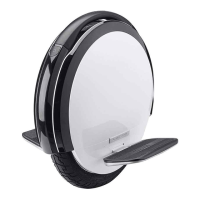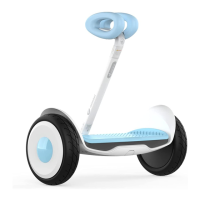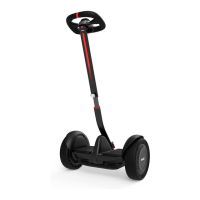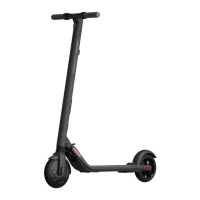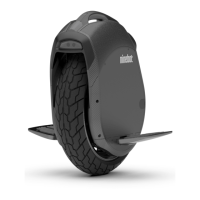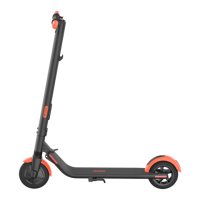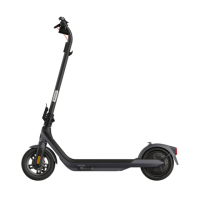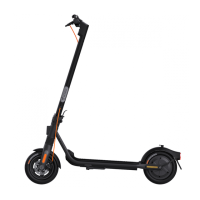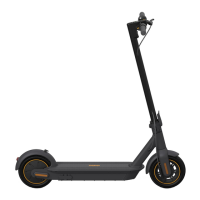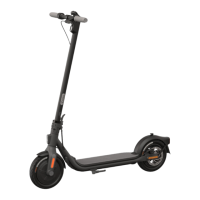Do you have a question about the Ninebot Segway Shared Kickscooter T60 and is the answer not in the manual?
Covers who should not ride, legal compliance, speed, road rules, and general safe operation.
Focuses on riding conditions, pre-ride checks, alertness, parking safety, and avoiding obstacles.
Addresses charging, modifications, children's use, brake system cautions, and storage.
Diagram illustrating key parts of the KickScooter, including handlebar, stem, and wheels.
Identifies the charger, power cord, and turn signal switch with operational notes.
Step-by-step guide for charging the KickScooter, including port cover and LED indicators.
Procedure for charging the battery when removed from the KickScooter.
Instructions on wearing protective gear, powering on, and starting to glide with one foot.
Guidance on keeping feet stable, using the throttle for acceleration, and slowing down.
Steps for using turn signals, shifting body weight, and turning the handlebars.
Advises against riding in rain, on wet surfaces, or hitting obstacles like bumps and doorways.
Warns against pressing throttle while walking, keeping feet on fender, carrying heavy objects, or riding one-footed.
Prohibits riding on public roads, highways, and warns against violent handlebar movements at high speed.
Warns about touching hot motors, taking hands off handlebars, riding with one hand, and using electronics.
Discourages riding through water, up/down stairs, over obstacles, and carrying passengers or children.
Guidelines for cleaning the mainframe, avoiding corrosive solvents, and protecting electronic components.
Advice on storing the KickScooter in a cool, dry place and proper battery charging practices.
Information on tire mounting, authorized repairers, and contacting customer service for repairs.
Details dimensions, weight limits, age, height, max speed, range, and terrain capabilities.
Covers operating/storage temperatures, IP rating, charging times, voltage, capacity, and BMS.
Specifies motor power, charger output, brake light type, and available riding modes.
Lists certifications like ANSI/CAN/UL-2272, UN/DOT 38.3, and ANSI/UL 2271 for the battery.
Details FCC rules compliance, potential interference, and user corrective measures.
States compliance with Industry Canada license-exempt RSS standards and operational conditions.
Covers WEEE disposal, battery recycling, RoHS, EMC, and Low-Voltage directives.
Identifies registered trademarks of Ninebot and Segway, and provides patent information.
Notes on product updates, model variations, manufacturer's right to change design, and copyright.
| Max Range | 60 km |
|---|---|
| Motor Power | 350 W |
| Battery Capacity | 551 Wh |
| Tires | 10-inch pneumatic tires |
| Operating Temperature | -10°C to 40°C |
| IP Rating | IPX5 |
| Nominal Voltage | 48 V |
| Max. Charging Voltage | 54.6 V |
| Nominal Capacity | 11.5 Ah |
| Motor Nominal Power | 350 W |
| Motor Max. Power | 700 W |
| Charger Nominal Power | 120 W |
| Charger Nominal Input Voltage | 100-240V |
| Charger Nominal Output Voltage | 54.6 V |
| Charger Nominal Output Current | 2 A |
| Max Speed | 25 km/h |
| Max. Payload | 100 kg |
| Max. Slope | 15° |
| Storage Temperature | -20°C to 50°C |
| Battery Management System | Over-heating, short circuit, over-current and over-charge protection |
| Applicable Age | 16+ |
| Required Height | 120-200 cm (3.9-6.6 ft) |
| Traversable Terrain | Paved roads, flat terrains |
